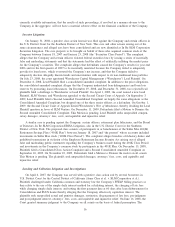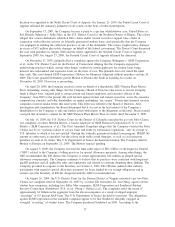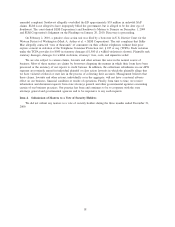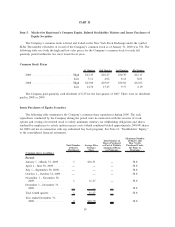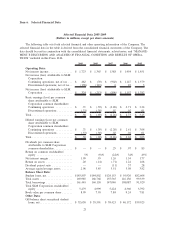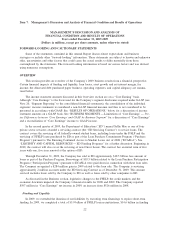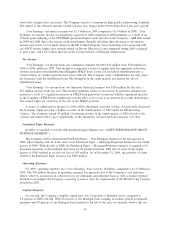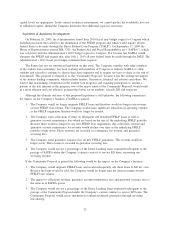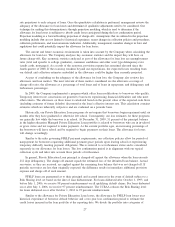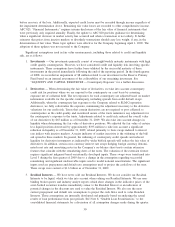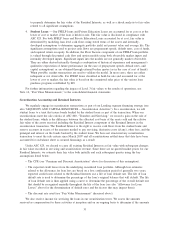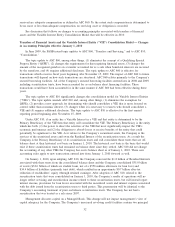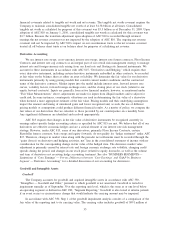Sallie Mae 2009 Annual Report Download - page 26
Download and view the complete annual report
Please find page 26 of the 2009 Sallie Mae annual report below. You can navigate through the pages in the report by either clicking on the pages listed below, or by using the keyword search tool below to find specific information within the annual report.capital levels are appropriate. In the current economic environment, we cannot predict the availability nor cost
of additional capital, should the Company determine that additional capital is necessary.
Legislative & Regulatory Developments
On February 26, 2009, the Administration issued their 2010 fiscal year budget request to Congress which
included provisions that called for the elimination of the FFELP program and which would require all new
federal loans to be made through the Direct Student Loan Program (“DSLP”). On September 17, 2009 the
House of Representatives passed H.R. 3221, the Student Aid and Fiscal Responsibility act (“SAFRA”), which
was consistent with the Administration’s 2010 budget request to Congress. If it became law SAFRA would
eliminate the FFELP and require that, after July 1, 2010 all new federal loans be made through the DSLP. The
Administration’s 2011 fiscal year budget continued these requests.
The Senate has not yet introduced legislation on this issue. The Company, together with other members
of the student loan community, has been working with members of Congress to enhance SAFRA to allow
students and schools to continue to choose their loan originator and to require servicers to share in the risk of
loan default. This proposal is referred to as the “Community Proposal” because it has the widespread support
of the student lending community, which includes lenders, Guarantors, financial aid advisors and others. We
believe that maintaining competition in the student loan programs and requiring participants to assume a
portion of the risk inherent in the program, two of the major tenets of the Community Proposal, would result
in a more efficient and cost effective program that better serves students, schools, ED and taxpayers.
Although the ultimate outcome of this proposed legislation is still unknown, the following summarizes
the impact on the Company’s business if SAFRA is passed:
1. The Company would no longer originate FFELP loans and therefore would no longer earn revenue
on new FFELP loan volume. The Company would make significant reductions in operating expense
as the FFELP origination function would no longer be needed.
2. The Company earns collections revenue on delinquent and defaulted FFELP loans as well as
guarantor account maintenance fees which are based on the size of the underlying FFELP portfolio.
Because there would no longer be any new FFELP loan originations, this collections revenue and
guarantor account maintenance fee revenue would decline over time as the underlying FFELP
portfolio winds down. These revenues are recorded in contingency fee revenue and guarantor
servicing fees.
3. The Company earns guarantor issuance fees on new FFELP guarantees. This revenue would no
longer occur. This revenue is recorded in guarantor servicing fees.
4. The Company would service a percentage of the Direct Lending loans originated subsequent to the
passage of SAFRA under the Company’s current contract to service ED loans, increasing our
servicing revenue.
If the Community Proposal is passed the following would be the impact on the Company’s business:
1. The Company would originate FFELP loans and would subsequently sell those loans to ED for a fee.
Because the loans would be sold, the Company would no longer earn net interest margin on new
FFELP loan volume.
2. The impact to collections revenue, guarantor account maintenance fees and guarantor issuance fees is
the same as if SAFRA passes.
3. The Company would service a percentage of the Direct Lending loans originated subsequent to the
passage of the Community Proposal under the Company’s current contract to service ED loans. The
Community Proposal would create incentives for enhanced default prevention through servicing
risk-sharing.
25



